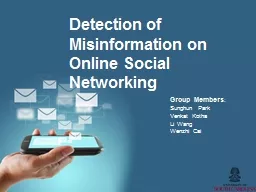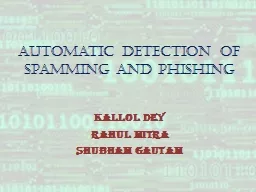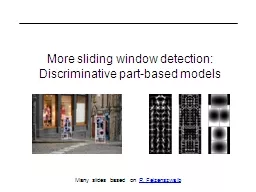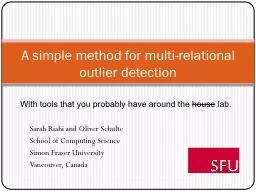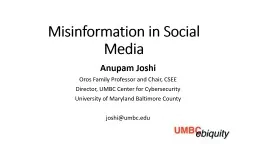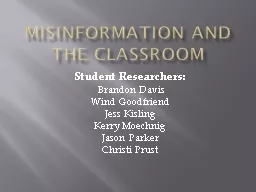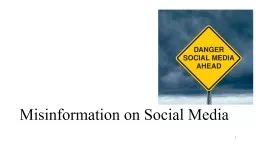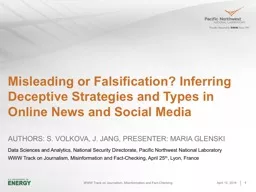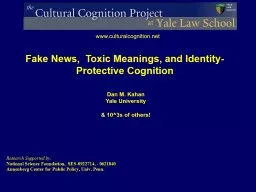PPT-Detection of Misinformation
Author : ellena-manuel | Published Date : 2018-11-09
on Online Social Networking Group Members Sunghun Park Venkat Kotha Li Wang Wenzhi Cai Outline Problem Overview Current Solutions Limitations of Current Solutions
Presentation Embed Code
Download Presentation
Download Presentation The PPT/PDF document "Detection of Misinformation" is the property of its rightful owner. Permission is granted to download and print the materials on this website for personal, non-commercial use only, and to display it on your personal computer provided you do not modify the materials and that you retain all copyright notices contained in the materials. By downloading content from our website, you accept the terms of this agreement.
Detection of Misinformation: Transcript
Download Rules Of Document
"Detection of Misinformation"The content belongs to its owner. You may download and print it for personal use, without modification, and keep all copyright notices. By downloading, you agree to these terms.
Related Documents

